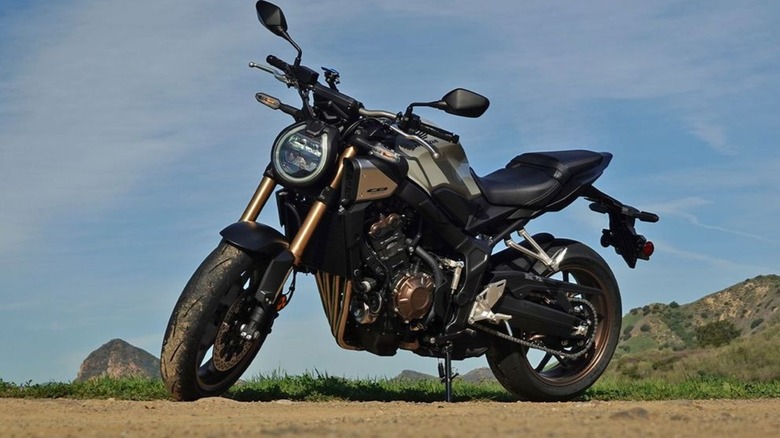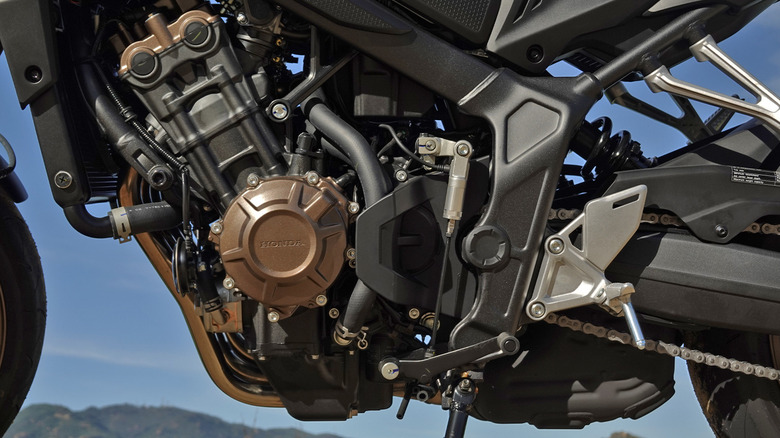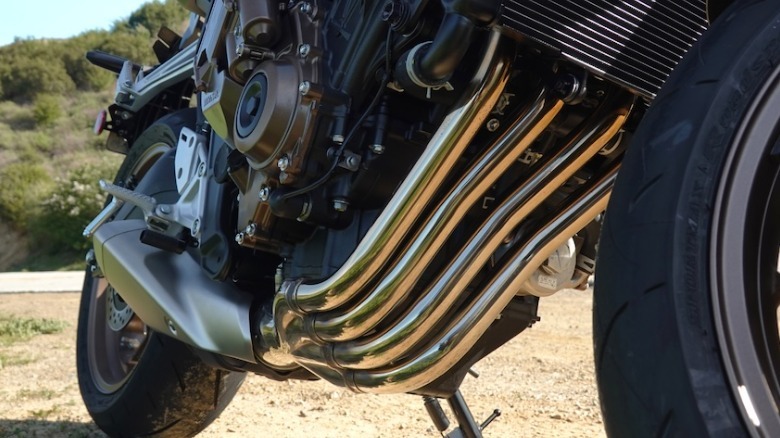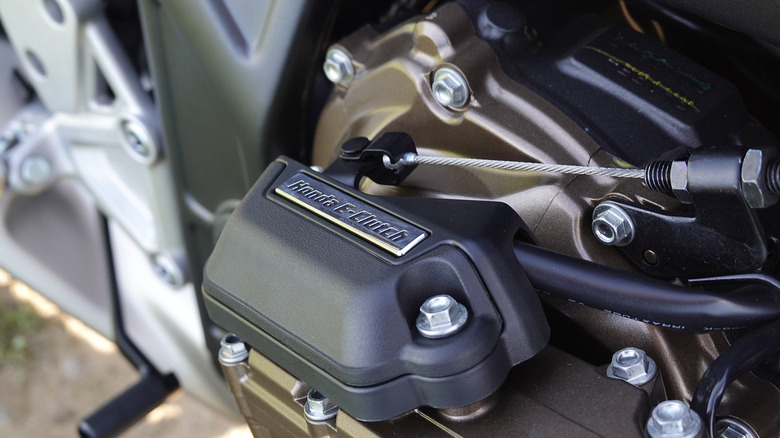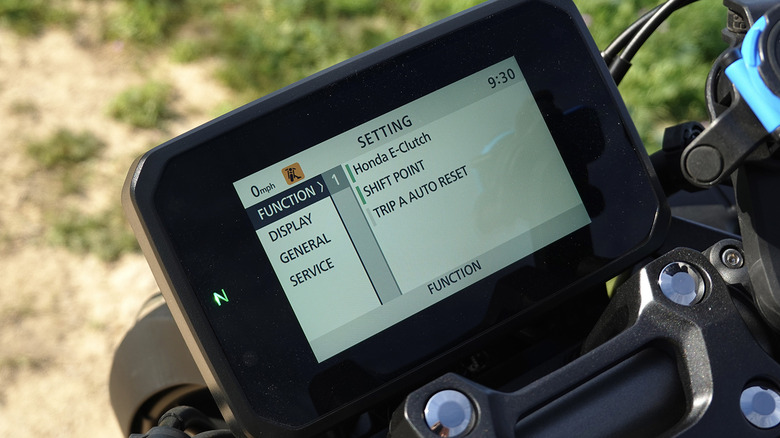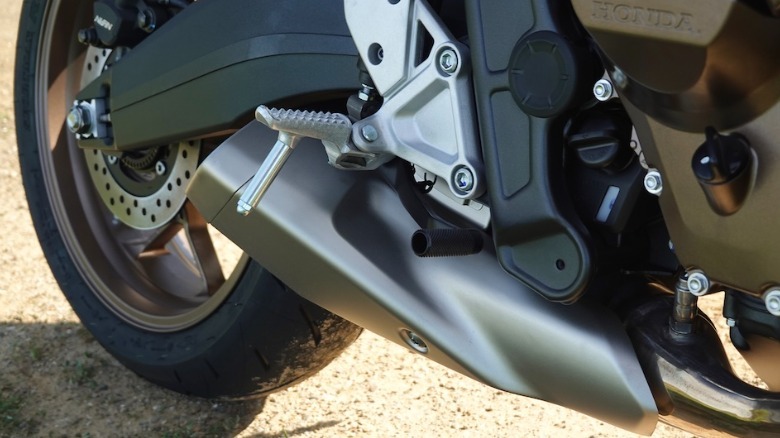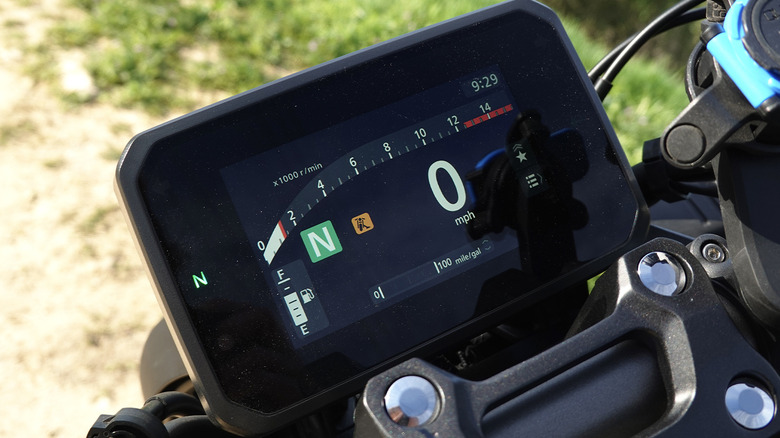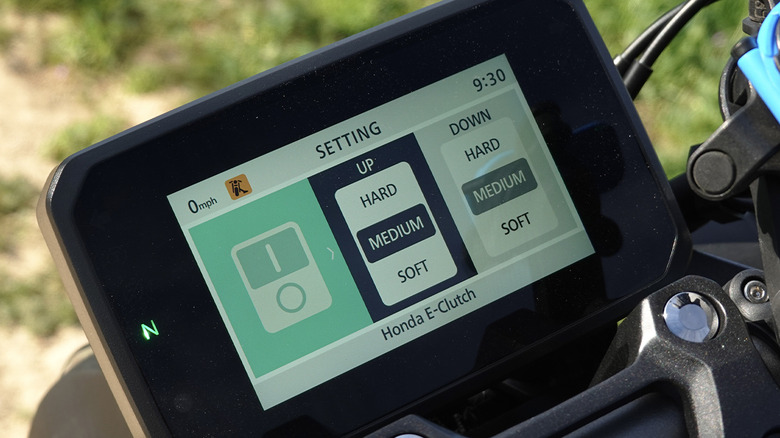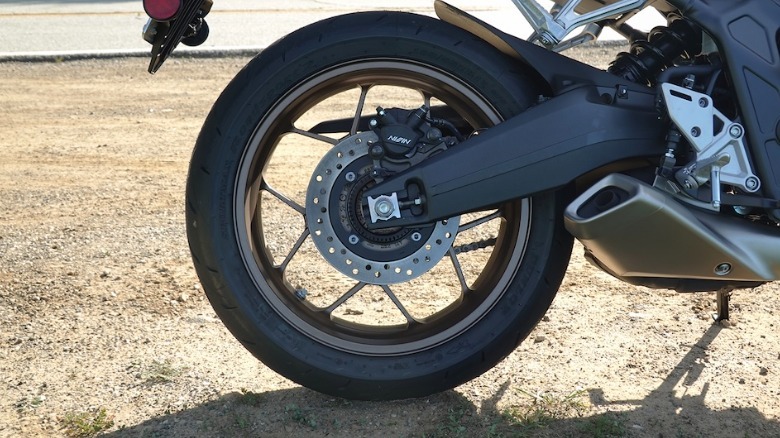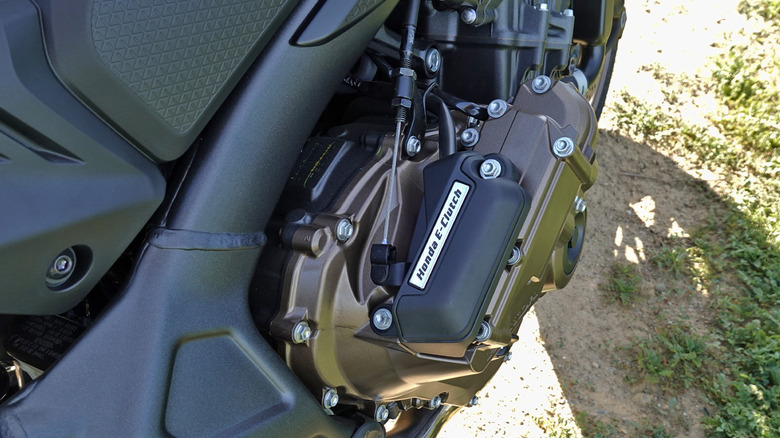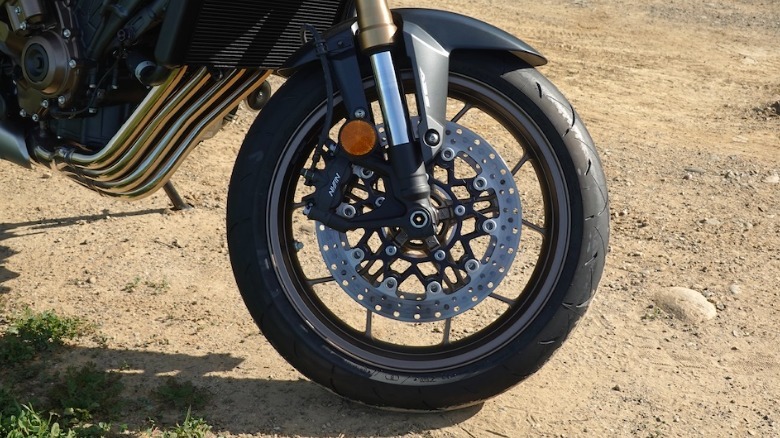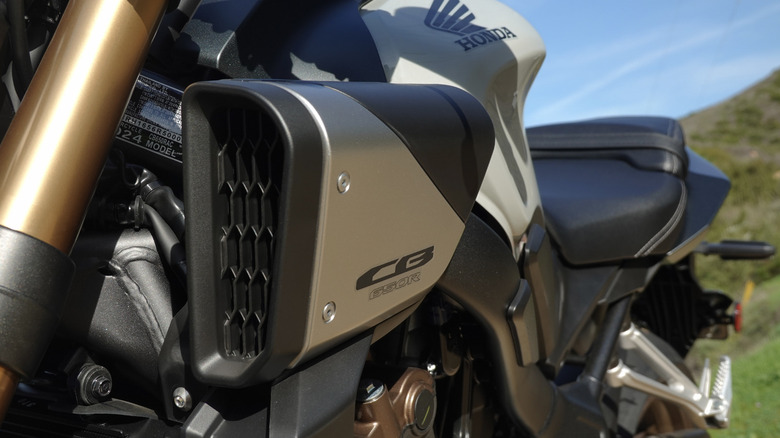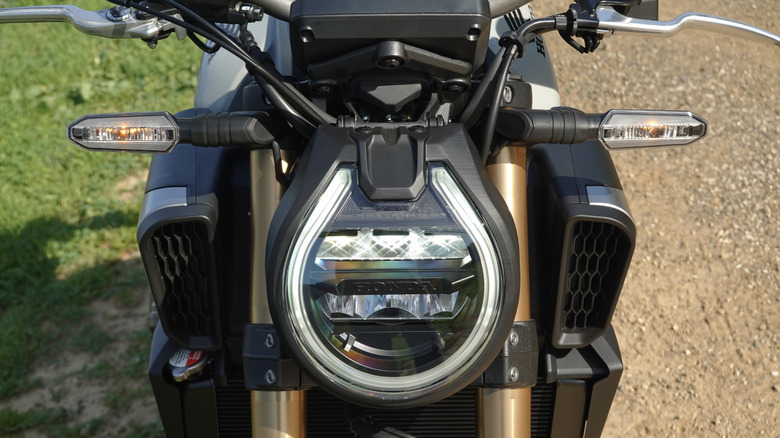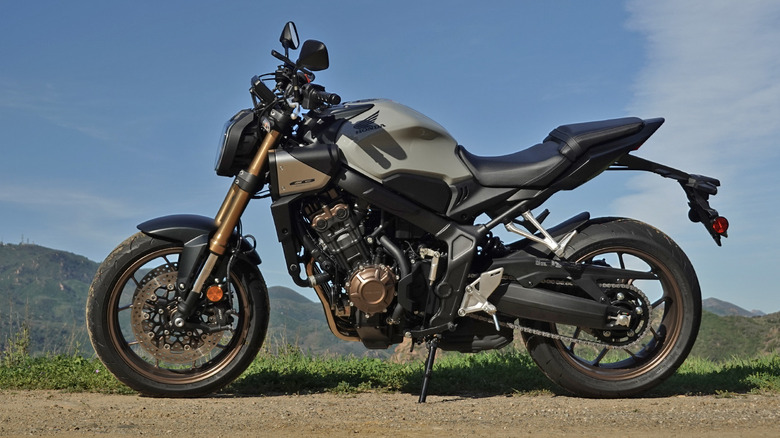2025 Honda CB650R Review: Does E-Clutch Make This The Perfect Commuter Bike?
When the urge to head out for a motorcycle ride strikes, I typically crave an engaging, thrilling, involving rip up and down tight and technical canyon roads. Even a bland motorcycle can get the old blood pumping better than most great sports cars, as the wind rush and speed blur and lean angle and sounds and smells all combine into a total sensory overload, and ideally a flow state given the right bike, right road, right mood, right weather...
But then again, I decided to get my motorcycle license mainly to avoid traffic every summer during Monterey Car Week. And now, while driving my incessantly growing fleet of old Mitsubishis around Los Angeles, I increasingly find myself absolutely sick of getting stuck in lines of cars at stoplight after stoplight.
This career spoils me for choice, in full transparency, and though I still prefer hardcore sport bikes on the race track, the appeal of commuter bikes still hits home. Where my 2006 Ducati Monster S2R 1000 absolutely reigns supreme as the greatest upright naked with semi-sporting aspirations, the heavy dry clutch lever, tight gear ratios, and touchy throttle make this classic somewhat less enjoyable for the daily grind. In almost direct contrast, I recently rode probably the best commuter bike in the world: Honda's new CB650R equipped with a pioneering "E-Clutch" tech that requires very few tradeoffs in the name of easy, carefree riding.
Classic Honda build quality, with new tech thrown into the mix
The solid, planted nature of the CB650R immediately revealed typical Honda build quality. And the readily accessible torque of a 649cc inline-four always helps, despite mostly tame exhaust valving that only starts to scream a bit above 8,000 RPM. (Not to mention gorgeously retro "waterfall" pipes on an otherwise simple, yet modern design.)
Positive shifts from the gear selector, brakes that just get the job done, suspension that straddles the line between smooth and taut for a bike that never even comes close to the pendulous nature that a relatively significant curb weight of 456 pounds should produce. Slightly higher pegs allow a bit more lean angle while pushing hard on winding hilly roads—hence the R in the ubiquitous alphanumeric nomenclature—and make this naked not a strict commuter by any means, too.
But of course, the CB650R is something of a known quantity, so adjusting to life with the E-Clutch was more of my focus from the first ride. I purposefully avoided doing any research into how the system works, in the hopes of experiencing the performance before predisposing my admittedly analytical brain toward any particular conclusion. And my initial impressions mostly leaned toward the positive.
Adjusting to the E-Clutch
The E-Clutch runs smoother than the best quickshifters, probably 90% of the time. That means Ducati as the reference point, of course, but most quickshifters from most bikemakers work best high in the revs at full throttle. Hard parameters to reach on 200-horsepower superbikes these days, anywhere off the track at least, which makes most quickshifters somewhat lurchy and balky at tamer speeds, and therefore not a particularly commuter-focused solution.
Instead, the E-Clutch allows for full stops and starts without actuating the clutch by hand, and then gearshifts via selections by left foot. The system clearly falls short of a full automatic or dual-clutch transmission, instead bridging the gap somewhere between a sequential gearbox and a torque-converter automatic. After adjusting for a couple of rides, I relented and dug in for some research.
How does Honda's E-Clutch work?
In short, two small electric motors mounted on the outside of the six-speed gearbox operate the clutch so the rider doesn't have to. Simple enough, right? Well, as with most modern tech, digging in further reveals further complexity. The E-Clutch relies on a whole suite of sensors measuring engine speed via the countershaft, rear wheel speed in relation to front wheel speed, gear position, clutch position, throttle position, and even gearshift lever load.
All this data then feeds to a motor control unit (MCU—not Marvel, thankfully) and the main ECU. Running on an algorithm, of course, the MCU then tells the two tiny motors to turn seven tiny gears that eventually twist the cable clutch shaft and move the clutch plates.
The electronics and hardware integrate fairly seamlessly, for the most part. But as with any algorithm programmed by humans, certain conditions outside of the predicted parameters can cause some confusion for the E-Clutch. For example, if I downshifted to engine brake while holding a bit of maintenance throttle, the clutch bogged down. I quickly learned to downshift only with the throttle fully closed. Similarly, at rolling turns, while making a right at a green light, the E-Clutch clearly prioritized smooth shifts. This then resulted in occasional throttle flares, as the clutch slipped perhaps slightly too much. Full throttle pulls, unleashing the CB650R's 80 horsepower above 10,000 RPM or so, also sometimes caused some flaring.
Ceding myself to computer control
Then again, maybe I needed some reprogramming, too. Oftentimes, I came to a stop and without thinking, grabbed for the clutch lever with my left hand. Clearly, the machines have trained me as well as Pavlov's dogs. But I also usually don't downshift all the way to first gear for most stops, instead slowing to second and then stopping before finding neutral (something Hondas typically do almost as well as my S2R 1000). But the E-Clutch prefers rolling to a stop in first, so I relented—and Honda actually recommends doing so, to avoid causing any excess wear on the components as they handle the torque load in higher gears.
A little light on the CB650R's tiny five-inch gauge screen asked me to downshift regularly, and the whole bike seemed happiest when I acquiesced. Then again, gearshifts still happened more smoothly when I used the manual clutch lever. In the name of science, I tried similar stops and acceleration runs back to back repeatedly, trying to test the E-Clutch's selectable shift modes.
Tests and more tests, in the name of science
Because yes, Honda allows the E-Clutch to turn off completely via a few button mashes into menus. But also, critically, it offers three different shift modes for both up and down: hard, medium, and soft. Fiddling through these settings, I found the upshifts counterintuitively happened smoothest in Hard, but that downshifts, more predictably, worked best in Soft. Switching between the various modes, or turning the E-Clutch fully off, makes the most sense while fully stopped and the engine off, though sometimes after making a change, I then needed to use the clutch to start up again—seemingly, the E-Clutch only reactivates once under way.
Throughout my as-scientific-as-possible testing regimen, I started to wonder how the E-Clutch results in wear on the CB650R's transmission components. Presumably, the system works more consistently and smoothly than a human hand, most of the time. Maybe the 456 pounds of momentum actually help the bike ride more smoothly. But with no way to legitimately test this, short of a gearbox teardown after thousands of hard miles, I imagined the eternal quandary of whether a car gets better MPG in autonomous cruise control or with a human foot on the gas adjusting to elevation change, wind, and traffic. But when the E-Clutch occasionally did what I didn't expect—or maybe vice-versa, when I did what it didn't expect—then the flares and balking seemed to accentuate potential wear.
A bit more mass on the right side
The system does take up some room on the right side of the bike, resulting in asymmetrical space around my shins. But that will depend on rider body type, though I fit well on the rest of the bike at six-foot-one with long limbs. So a CB650R with mostly smoother shifts most of the time and easier stop-and-go commuting in traffic, cutting lefthand grip exhaustion factor down and offering new riders a chance to adjust to motorcycle dynamics without needing to fully master manual transmissions—not many downsides right?
At any rate, the E-Clutch certainly works better than MV Agusta's Smart Clutch System (SCS), a purely mechanical system that I quickly discovered often surging forward at stoplights, and that lurked and clunked otherwise due to the lack of any computer control. Honda clearly prioritized the creation of an easier setup, with less for the rider to worry about. But why not go full constant velocity transmission or torque-converter automatic, as on other Hondas including the Rebel, Goldwing, and Africa Twin?
The E-Clutch can turn on or off
For the seriously bland traffic toaster ride, with zero enjoyment at all, fully automatic shifting makes more sense. But throughout my few months with the CB650R, a more playful and enjoyable character emerged—regardless of whether I kept the E-Clutch activated or not. The rest of the bike emerged as one of my absolute favorites, a pleasant surprise out of Honda's otherwise impressive lineup.
As an enthusiast out for a weekend ride, I might turn the E-Clutch off once I reached the canyons, precisely to ramp up the mechanical connection to road and machine. Ripping through gears, leaned over in a low squat with the easy weight transfer of a perfectly balanced naked, never hitting superbike pace but still finding the level of flow that only the best of the best can achieve... And on the way there and back, why not keep the E-Clutch on?
Tradeoffs for the newest tech
On the other hand—pun fully intended—the E-Clutch does add weight, but to the tune of just 4.5 pounds. And complexity, always something to avoid on a motorcycle, does step up with the wiring for communication between gearbox, cltuch, MCU, throttle grip, gear selector lever, etc. Hopefully Honda quality helps here, but then also consider the tiny little motors, and the split shaft for manual override. These components sit right on the outside beneath the expanded clutch cover, at least, so eventual replacement should be fairly straightforward in the event of any failure.
The cost consideration also comes to mind. How much does the E-Clutch contribute to the CB650R's $9,399 pricetag? Well, that's only $100 more than a previous bike without the E-Clutch, but Honda now will not sell the CB650R without the system. Given the option, would I shell out $100 and take the middling weight gain and ergonomic asymmetry hit in the name of tech that I can turn off whenever I don't want to use it? Well, probably. But what if a CB650R without the E-Clutch cost $500 less, or $1,000? Decisions decisions...
2025 Honda CB650R E-Clutch Verdict
I enjoyed almost everything about the CB650R. The sufficient if not overwhelming power, futuristic yet understated style, comfortable yet sporty geometry, and supreme sensation of rock-solid construction all stood out throughout the entire loan. A tail tidy, of course, and perhaps slightly louder exhaust might fit into the equation if I bought this bike, yet another engineering marvel from Honda. But as the excessive amount of unanswered—almost unanswerable—questions in this story indicate, the E-Clutch as a concept, even if brought to reality and executed efficiently, still splits my impressions into fragments, bringing up more questions than answers.
There's the argument that new riders should learn how to use manual transmissions by necessity, in an era when shifting through gears is an increasingly rare skill. And modern bikes without automatic or semi-automatic transmissions still tend to use much lighter controls than my old Ducati, making this process all the easier precisely in the name of attracting new converts to the motorcycle lifestyle. But of course, the tech will undoubtedly improve from here, whether or not the E-Clutch as a concept was a good one in the first place, or whether Honda decided to undertake the project simply in the name of advancement for advancement's sake.
